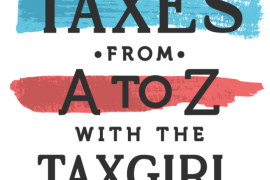It’s my annual “Taxes from A to Z” series! This time, it’s Tax Cuts and Jobs Act (TCJA) style. If you’re wondering whether you can claim home office expenses or whether to deduct a capital loss under the new law, you won’t want to miss a single letter.
D is for Due Dates.
If your tax professional was glued to a cup of coffee all day, there’s a good reason: Today is the due date for certain business-related tax returns, including partnerships and S corporations returns. Taxpayers who file a form 1120-S or a form 1065 have until the end of today, March 15, to get those returns filed. And that’s a lot of returns: typically, S corporations file more than 70% of corporate returns.
Other businesses may have a bit longer to file:
- C corporation returns are due on April 15, 2019, for a calendar year-end corporation;
- Self-employed taxpayer returns are due on April 15, 2019; and
- Nonprofit returns are due on May 15, 2019, for a calendar year-end non-profit.
Certain returns related to foreign assets must be filed in April, including form 3520, Annual Return to Report Transactions with Foreign Trusts and Receipt of Certain Foreign Gifts, and FinCEN Report 114 relating to Report of Foreign Bank and Financial Accounts (replacing the old “FBAR return”). Those due dates are April 15.
And, of course, April 15 is the deadline for most individual tax returns. That means there’s just a month to go until Tax Day for most individual taxpayers (those in Maine and Massachusetts have a little longer). There is a proposal to extend the tax filing season, but for now, it’s just that: a proposal.
You can see the due dates for various tax returns here:

Taxpayers affected by natural disasters may have extra time to file. In particular, the Internal Revenue Service (IRS) extended the tax due date for affected individuals and businesses who were victims of tornadoes and severe storms in Alabama. Taxpayers in a Major Disaster Declaration area designated by the Federal Emergency Management Agency (FEMA) have until July 31, 2019, to file certain tax returns and make tax payments; so far, this only applies to Lee County, Alabama. You can find more details on the disaster relief page on IRS.gov.
If you’re not ready to file your individual tax return, there’s still time. With a few weeks to spare, you can call and get an appointment with a tax professional; download some tax prep software and squeeze in the time to file while binge-watching The Good Place; or join millions of your fellow taxpayers who will file for an extension. Filing an extension takes a few minutes, there are no special hoops to jump through, and there’s no fee payable to the IRS. And contrary to popular belief, filing for an extension isn’t an audit trigger.
To file for an extension, you can:
- File for an extension online for free using FreeFile on IRS.gov;
- File for an extension electronically using fillable forms (you’ll find the instructions here);
- Ask your tax preparer to file an extension for you;
- Use a service like File Later to file for an extension;
- File using tax prep software; or
- Complete and mail a federal form 4868, Application for Automatic Extension of Time To File U.S. Individual Income Tax Return(downloads as a pdf).
The regular “timely filing” rules apply – so be sure and get your extension postmarked or e-file accepted by the end of the day on April 15. Assuming you’re on time, you will have six more months to get your return to the IRS and not be subject to the late-filing penalty. For 2019, this means that, with an extension, you’ll have until October 15, 2019, to file an individual tax return.
Remember that an extension is an extension of the time to file and not an extension of time to pay. If you expect to owe at tax time and you’re filing for an extension, you should make a payment with your extension request to avoid interest and penalty.
Some taxpayers get an automatic extension of time to file without having to file. Those include:
- If you’re a U.S. citizen or resident and you live outside of the U.S. or Puerto Rico and your main place of business or post of duty is outside of the U.S. or Puerto Rico or if you are active-duty military and live outside of the U.S., you qualify for a two-month extension without having to file form 4868. That moves your due date to June 15 to file and pay. However, interest is still due on any tax payment made after April 15.
- Members of the military and others serving in combat zones or hazardous zone areas generally have until at least 180 days after they leave the zone to file returns and pay any taxes due.
For more Taxes From A To ZTM 2019, check out the rest of the series:




